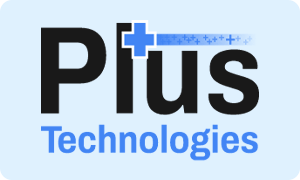In an era where digital documents and online transactions are increasingly more prevalent, the importance of having anti-counterfeit printing measures in place cannot be overstated. A recent scandal involving counterfeit college admission letters has underscored this need, casting a spotlight on the crucial role of advanced document security measures.
The incident took place in Canada, where a group of international students, unknowingly, used falsified admission letters to secure their entry into the country. These letters were supplied by an education consultant, who is now the subject of a significant investigation. The students, some of whom had completed their studies and were on the path to permanent residence, professed their ignorance of the forgery.
This scandal serves as a stark reminder of the importance of document security and the preventative role of anti-counterfeit printing. It’s a call to action for institutions worldwide to integrate advanced security measures into their document processing systems.
In this article, we’ll delve into the world of document security and anti-counterfeit printing. We’ll explore how OM Plus’ Tamper Resistant Printing Solution could have averted this incident and how such technologies can protect against fraudulent activities.
The Scandal in Detail
 The scandal, which has sent shockwaves through the international student community, centers around an education consultant based in India. Brijesh Mishra, the owner of EMSA, a consulting firm in Jalandhar, allegedly provided fake college admission letters to facilitate visas for students to study in Canada.
The scandal, which has sent shockwaves through the international student community, centers around an education consultant based in India. Brijesh Mishra, the owner of EMSA, a consulting firm in Jalandhar, allegedly provided fake college admission letters to facilitate visas for students to study in Canada.
One of the students involved, Amritraj Singh Batth, was among a group charged with misrepresentation by the Canada Border Services Agency. The charges were in connection with using fraudulent documents to obtain their study permits. Batth’s case is particularly notable as he claims he was unaware that the admission letter to Humber College’s business program, used for his visa application, was doctored.
The students involved in the scandal have been in Canada since 2017, with some having completed their studies and on the path to permanent residence. They all claim they were unaware that the admission letters provided by Mishra were forgeries.
This scandal has exposed a significant loophole in the document verification process and highlighted the need for more robust document security measures. It’s a stark reminder of the potential for misuse and fraud in our increasingly digital world.
The Importance of Document Security
In the digital age, document security is not just a luxury but a necessity. The scandal involving counterfeit college admission letters is a stark reminder of the potential for fraud and the devastating consequences it can have.
Document security refers to the measures taken to prevent unauthorized access to documents and ensure their authenticity. It involves protecting sensitive information from a variety of threats, including unauthorized access, data breaches, and, as in the case of the scandal, forgery.
The consequences of neglecting document security can be severe. For the students involved in the scandal, the use of forged documents has led to legal troubles and the potential revocation of their study permits. For the institutions involved, it has resulted in reputational damage and a loss of trust.
In the context of college admissions, document security is crucial. Admission letters, transcripts, and other documents contain sensitive information and are used to make important decisions. If these documents are not secure, it can lead to fraudulent admissions, unfair practices, and a loss of credibility for the institutions involved.
Anti-Counterfeit Printing: A Solution
In the face of rising document fraud, anti-counterfeit printing emerges as a powerful solution. This technology involves the use of advanced printing techniques and security features that make it extremely difficult, if not impossible, to forge or alter documents without detection.
One of the key features of anti-counterfeit printing is the use of a Void Pantograph. This technology involves the use of background patterns that become visible or change when an attempt is made to copy or scan the document. This makes it easy to identify counterfeit documents and deters potential fraudsters.
Another crucial feature is Microprint Technology. This involves the use of extremely small text that is difficult to reproduce using standard copiers or scanners. The text appears as a line or pattern to the naked eye but can be read as text under magnification. This feature adds an effective additional layer of security to authenticate original documents.
These technologies, among others, make anti-counterfeit printing a formidable tool in the fight against document fraud. They not only deter potential fraudsters but also make it easier to authenticate originals and identify instances of fraud.
OM Plus Tamper Resistant Printing Solution
Plus Technologies, a leader in secure printing solutions, offers a Tamper Resistant Printing Solution in its OM Plus product suite that could have prevented the scandal involving counterfeit college admission letters. This solution is designed to enhance document security and prevent fraud, making it an invaluable tool for institutions worldwide.
The Tamper Resistant Printing Solution leverages advanced anti-counterfeit printing technologies to create secure documents. It injects security features into existing print streams, creating tamper-resistant documents on plain paper. This eliminates the need for special pre-printed forms, making the solution cost-effective and easy to implement.
One of the key features of this solution is the use of Void Pantograph technology. This technology creates a background pattern that becomes visible when someone attempts to copy or scan the document. This makes it easy to identify counterfeit documents and deters potential fraudsters.
The solution also utilizes Microprint Technology, which involves the use of extremely small text that is difficult to reproduce using standard copiers or scanners. This adds an additional layer of security to the document, making it even more difficult to forge.
In addition to these features, OM Plus also includes a feature called Pull Printing. This allows only authorized personnel to authenticate themselves, commonly with a card ID, before releasing confidential documents while physically present at a printer of their choice.
The Role of Technology in Preventing Fraud
As we navigate the digital age, technology’s role in fraud is becoming increasingly prominent. Institutions worldwide are finding themselves exploited by individuals with malicious intent, leveraging advanced technology that was previously inaccessible.
The advent of sophisticated software, high-resolution scanners, and printers has made it easier than ever to create counterfeit documents that are nearly indistinguishable from the originals. This, coupled with the rise of online platforms where these fraudulent documents can be distributed widely and quickly, has created a fertile ground for fraud to flourish.
Moreover, the rapid pace of technological advancement means that these threats are continually evolving. What was once a secure system can quickly become vulnerable as new technologies and techniques are developed. This constant evolution makes it challenging for institutions to keep up and protect themselves effectively.
The recent scandal involving counterfeit college admission letters is a prime example of this. It demonstrates how easily institutions can be exploited and the devastating consequences that can result. It’s an obvious red flag to the urgent need for increased document security measures.
With these challenges in mind, it’s clear that institutions must stay ahead of the curve by adopting advanced security measures and continually updating them to counter new threats. Only by doing so can we hope to stem the tide of document fraud and protect the integrity of our institutions.
Identifying Fake and Forged Documents
 Identifying fake and forged documents is a crucial aspect of document security. With the right tools and technologies, institutions can quickly and easily verify the authenticity of a document and detect any attempts at forgery.
Identifying fake and forged documents is a crucial aspect of document security. With the right tools and technologies, institutions can quickly and easily verify the authenticity of a document and detect any attempts at forgery.
OM Plus’ Tamper Resistant Printing Solution provides a range of features that make it easier to identify fake and forged documents. These features are designed to deter potential fraudsters and provide a robust defense against document fraud.
The Void Pantograph technology included in the Tamper Resistant Printing Solution is a prime example of this. This feature creates a background pattern that becomes visible when someone attempts to copy or scan the document. This makes it easy to identify counterfeit documents and deters potential fraudsters.
Another key feature is Microprint Technology. This involves the use of extremely small text that is difficult to reproduce using standard copiers or scanners. The text appears as a line or pattern to the naked eye but can be read as text under magnification. This adds an additional layer of security to the document, making it even more difficult to forge.
Final Thoughts on Anti-Counterfeit Printing
The scandal involving counterfeit college admission letters has highlighted the importance of document security and the role of anti-counterfeit printing in avoiding such incidents. It’s a clear reminder of the potential for misuse and fraud in our increasingly digital world.
OM Plus’ Tamper Resistant Printing Solution offers a robust and reliable way to enhance document security. By leveraging advanced anti-counterfeit printing technologies, it creates secure documents that are easy to authenticate and difficult to forge or alter. This makes it an invaluable tool for institutions that need to ensure the protection of their documents.
The solution’s use of Void Pantograph and Microprint Technology, along with its Secure Pull Printing features, provides a comprehensive defense against document fraud. Not only do these features deter potential fraudsters but it also makes it easier to identify originals and track the instances of fraud.
In a world where document security is paramount, solutions like the one offered by Plus Technologies are more important than ever. By adopting these technologies, institutions can protect themselves and their stakeholders from the devastating consequences of document fraud.
As we move forward, it’s clear that document security and anti-counterfeit printing will continue to play a crucial role in preventing fraud. With solutions like OM Plus’ Tamper Resistant Printing, we can look forward to a future where document security is the norm, not the exception.


